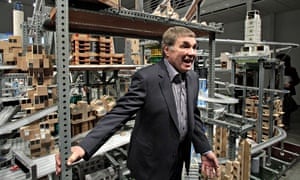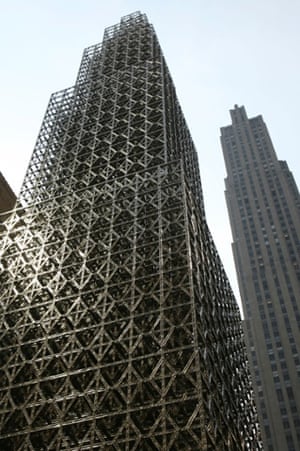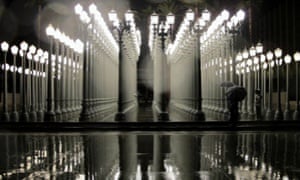新編輯查映嵐,寫於今期專題「肉身微體」後的延伸文章。
# 新鮮熱辣的書才剛到手,文中提及的藝術家 Chris Burden 卻於前天去世了,剛好在七十大關前栽倒。七十年代最激進的行為藝術家,最後竟然像無數普通人一樣得癌症死去,那麼反高潮──但那是我自己把他等同了早期作品、把他的人生當成戲劇了。
# 歐美一些大媒體都有報導他的死訊,我卻私心地覺得他去得有點寂寞:明明是這麼重要的藝術家,關於他的報導卻轉眼被威尼斯、泰納獎、拍賣價創新高的畢加索作品淹沒了。報導的標題,有以「Conceptualist With Scars」來形容他(NYT),有提及他被槍擊和釘十架的往績,也有些以他晚期的公共藝術作品來介紹他。他有一座裝置 Urban Light (2008) 在洛杉機 LACMA 外,202 支街燈逐列排開,頗為壯觀,雨夜尤其漂亮,有媒體甚至稱之為「Chris Burden 最著名的作品」(Gizmodo)。
Chris Burden obituary
Performance artist whose work attracted celebration and notoriety equally

The American artist Chris Burden, who has died aged 69 from melanoma, outflanked the minimalism he encountered as a student by operating at an even more elementary level: using his own body as a metaphor for the social and political landscape. Among the ordeals he presented in his early performanceswere shooting, crucifixion, drowning, electrocution and kidnapping. In the era of emerging civil rights and opposition to the Vietnam war, this relentless series of dark enactments demanded that audiences examine the nature of vulnerability and questions of personal and social responsibility.
Works such as Shoot (1971) and Trans-fixed (1974) attracted celebration and notoriety in equal measure. In the former he was shot in the arm from about five yards away, in a California gallery. The impact, rather greater than the grazing that he had been planning for, resulted in a trip to hospital. In the latter, he lay over the back of a Volkswagen, “the car of the people”, with nails going through his palms into its roof.

Burden’s master’s degree exhibition, Five Day Locker Piece (1971), involved inserting himself into a school locker measuring 2ft x 2ft x 3ft. The locker above contained five gallons of water, the locker below an empty five-gallon drum. His voluntary incarceration in the metal structure for five days induced shock and anxiety in the minds of powerless witnesses.
His museum-scale sculptures grappled with paradoxes concerning technology and the needs of society. Fist of Light (1993) was a sealed, room-sized structure that served as his “visual metaphor for nuclear fission”. Crude, homemade suspended toys stood as symbols of America’s nuclear submarine fleet in All the Submarines of the United States of America (1987), while 50,000 matchsticks lying on 50,000 nickel coins represented the assumed size of the Soviet tank command, in The Reason for the Neutron Bomb (1979).The conceptual and aesthetic clarity of his performance works was maintained in other media: sculpture, drawing, print making, film and broadcast. He used them all to bring out the shifting tensions of political and personal power.
Urban Light (2008), originally assembled outside his studio but more recently installed at the entry to Los Angeles County Museum of Art, is a monumental arrangement of 202 antique cast-iron street lamps, perfectly restored and working, arranged to represent a classical Greek temple. It became a landmark and contemporary symbol of the city.
Whatever the medium, the psychological and sensory intensity remained constant, as did Burden’s fascination with the collision of shared and private space, boundaries and responsibilities, power and authority, rebellion and conformity. His work is simultaneously obscure, political and profound.
Burden continually challenged the relationship of artist and viewer, subverting ideas of what artists do and say. Whether pushing himself to the extremes of pain and discomfort, creating scale models of bridges from Meccano, building fuel-efficient vehicles or toy-car cities, he attempted to transcend physical limits and explore the psychological impact of actions and objects in the world.
Born in Boston, he was the son of Rhoda, a biologist, and Robert, an engineer. He was the eldest of three children and grew up in France and Italy. At the age of 17 he won a Science Foundation grant to study in San Diego, and in 1965 enrolled at Pomona College, east of Los Angeles, to study architecture, physics and art. He then entered graduate school at the University of California, Irvine. There he was taught by Robert Irwin, an artist committed to education, and in 1978 followed in Irwin’s footsteps when he began teaching part-time at the University of California, Los Angeles. Eight years later he became a professor there, and did much to make his department one of North America’s leading arts schools.

We were fortunate enough to work with Burden on several occasions. When we prepared previously unseen material from his archive in Topanga Canyon, in the Santa Monica mountains, for the book Chris Burden (2007), all around us the studio was busy with new works and structural experiments. Ghost Ship (2005) was a crewless, self-navigating 30ft sailing boat developed by Burden in collaboration with our organisation, Locus+. Its maiden voyage from Fair Isle, in the Shetland Islands, to Newcastle upon Tyne, where we are based, was tracked via a website.
The last time we met was in New York in 2013 to celebrate his retrospective at the New Museum and to see Ghost Ship suspended hundreds of feet up from the side of the museum’s facade, where it has since remained. Burden was still creating striking work in the unerring belief that art can empower and, through revelation, change individuals and society for the better.
His first marriage, to Barbara, ended in divorce. He is survived by his second wife, the sculptor Nancy Rubins.
• Christopher Lee Burden, artist, born 11 April 1946; died 10 May 2015

沒有留言:
張貼留言